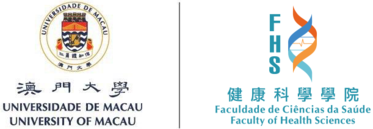| Talk title | The immunotherapeutic properties of novel tellurium compounds: mechanism of action and clinical results |
| Speaker | Prof. Benjamin Sredni Head, Cancer, AIDS & Immunology Research Institute, Bar-Ilan University, Israel |
| Date & Time | 16 November 2017 (Thursday) 14:30-15:30 |
| Venue | Room G004, E12 Building (University of Macau) |
| Abstract | Tellurium is a rare element, which has been regarded as a non-essential trace element; its biological role, if any, has not been clearly established to date. The investigation of therapeutic activities of tellurium compounds is rather limited in the literature, despite the relative abundance of tellurium in the human body. Nevertheless, the varied activities of tellurium agents in both malignant and normal cells are extremely exciting, though very complex. Not surprisingly, an increased interest in tellurium among biological chemists and pharmacists has fuelled the search for more and more diverse tellurium compounds. We will focus on two small inorganic tellurium complexes, ammonium trichloro(dioxoethylene-O,O’)tellurate (AS101) and Octa-O-bis-(R,R)-tartarate ditellurane (SAS), thoroughly investigated by us, converging at their clinical activities, and elucidating their mechanism of action. AS101 is probably the most extensively studied synthetic tellurium compound from the standpoint of its biological activity. It is a potent immunomodulator with a variety of potential therapeutic applications. It is probably the only tellurium compound to be tested in phase I/II clinical studies including Cancer patients and aging Macula degeneration (AMD). The effects of AS101 and SAS are primarily caused by their specific Te(IV) redox-modulating activities enabling the inactivation of the Integrin VLA-4. All of these have profound consequences regarding clinical activity includingsensitization of tumors to chemotherapy and anti-angiogenic activities. These properties, coupled with the excellent safety profile of the compounds, suggest promising clinical therapeutic potential for tellurium compounds such as AS101 or SAS. |


